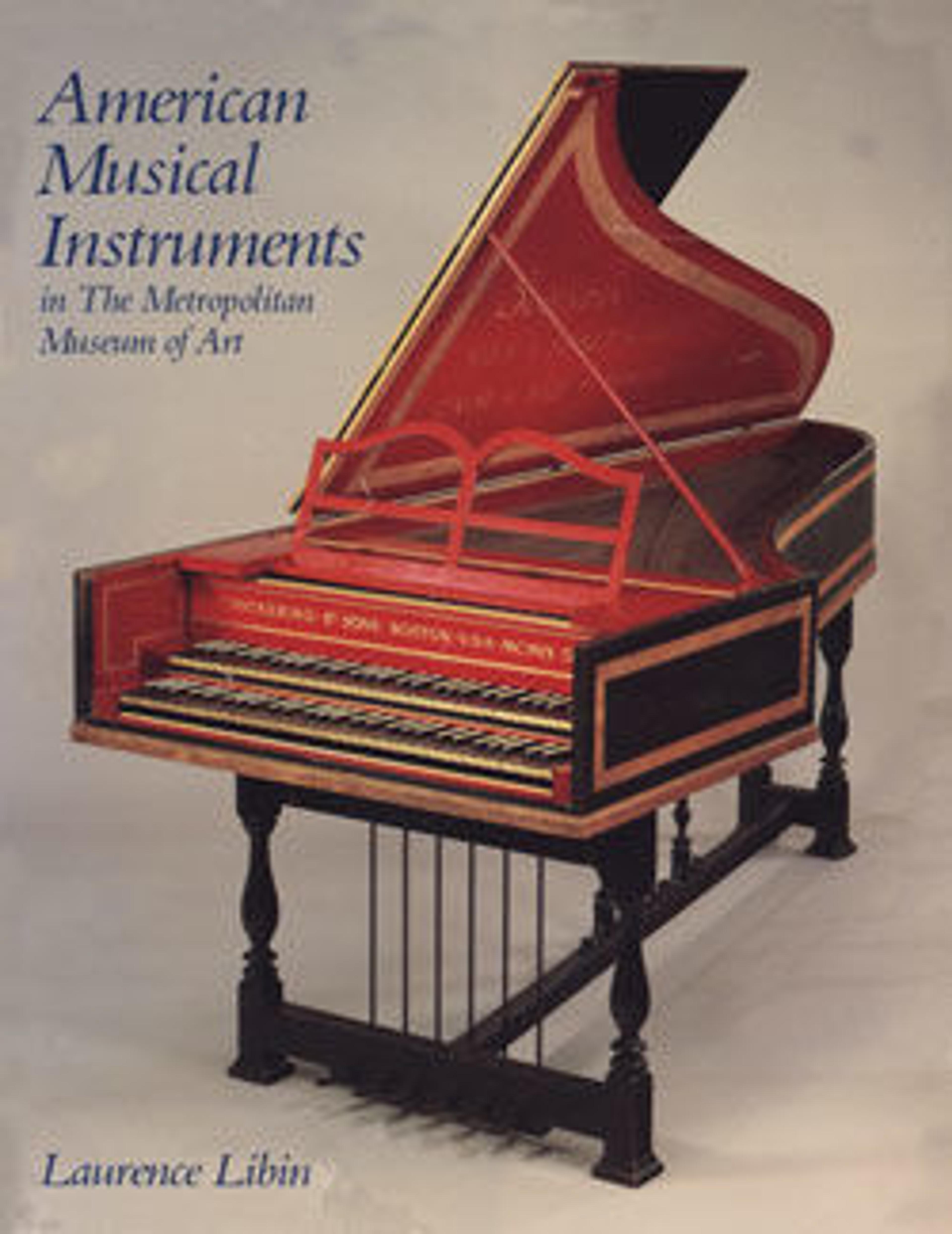Barrel Organ
Instead of having a keyboard played by an organist, a barrel organ is a mechanical instrument that has the musical notes encoded in an arrangement of metal pins in a wooden barrel or cylinder. This instrument is activated by a person turning a hand crank, which both powers the bellows that provides air, and also rotates the cylinder that engages the mechanism that sends the air through specific pipes.
The tunes represent a typical repertoire of English and American dances, patriotic songs, hymn tunes and popular music of the period ca. 1800.
Technical description: Rectangular cherry and satinwood veneered case with inlay showing a classical portal on the front panel; lid hinges up to reveal mechanism; door on left side allows barrel to slide out; several different layers of floral design colored paper cover interior case sides and reservoir top; lid locks to front, with keyhole above portal; four brass stop knobs (two missing) operate stop levers extending through front panel, bottom, and 16 tunes are selected by engaging notches on shift pin with a latch mounted on right side; curved crank with wood handle protrudes near upper right side of front; within, the crank turns a combination worm and crank shaft, the worm engaging a spur gear on a cylindrical, brass-pinned wood barrel, while crank shaft operates two double fold feeders mounted below a reservoir; feeders and reservoir covered with brown leather; 17 sticker pins open valves in windchest below 3 ranks of wood pipes (lowest pipes mitered, pipes mainly open with tin tuning flaps, but lowest pipes stopped), and six other pipes are set horizontally into a windchest in front of the barrel and are operated by pressing 6 buttons near the front left corner inside the case (four of these pipes are open wood, two are single beating reed with cane reeds lapped with thread onto shallots); compass two octaves diatonic, D-D, plus upper C#; pipes marked with letter names and numbers; titles of tunes shown on handwritten label on sliding panel mounted in a box at right side within case.
The tunes represent a typical repertoire of English and American dances, patriotic songs, hymn tunes and popular music of the period ca. 1800.
Technical description: Rectangular cherry and satinwood veneered case with inlay showing a classical portal on the front panel; lid hinges up to reveal mechanism; door on left side allows barrel to slide out; several different layers of floral design colored paper cover interior case sides and reservoir top; lid locks to front, with keyhole above portal; four brass stop knobs (two missing) operate stop levers extending through front panel, bottom, and 16 tunes are selected by engaging notches on shift pin with a latch mounted on right side; curved crank with wood handle protrudes near upper right side of front; within, the crank turns a combination worm and crank shaft, the worm engaging a spur gear on a cylindrical, brass-pinned wood barrel, while crank shaft operates two double fold feeders mounted below a reservoir; feeders and reservoir covered with brown leather; 17 sticker pins open valves in windchest below 3 ranks of wood pipes (lowest pipes mitered, pipes mainly open with tin tuning flaps, but lowest pipes stopped), and six other pipes are set horizontally into a windchest in front of the barrel and are operated by pressing 6 buttons near the front left corner inside the case (four of these pipes are open wood, two are single beating reed with cane reeds lapped with thread onto shallots); compass two octaves diatonic, D-D, plus upper C#; pipes marked with letter names and numbers; titles of tunes shown on handwritten label on sliding panel mounted in a box at right side within case.
Artwork Details
- Title: Barrel Organ
- Date: ca. 1800
- Geography: East Hamilton, New York, United States
- Culture: American
- Medium: Wood, various materials
- Dimensions: Barrel organ: 87cm x 52cm x 65cm
Barrels: 88.5cm x 34.5cm x 20cm - Classification: Aerophone-Automatic
- Credit Line: Gift of Eric M. Wunsch, 1972
- Object Number: 1972.166
- Curatorial Department: Musical Instruments
More Artwork
Research Resources
The Met provides unparalleled resources for research and welcomes an international community of students and scholars. The Met's Open Access API is where creators and researchers can connect to the The Met collection. Open Access data and public domain images are available for unrestricted commercial and noncommercial use without permission or fee.
To request images under copyright and other restrictions, please use this Image Request form.
Feedback
We continue to research and examine historical and cultural context for objects in The Met collection. If you have comments or questions about this object record, please complete and submit this form. The Museum looks forward to receiving your comments.
